I am trying to implement a deferred screenspace decal system using OpenGL following an article called "Drawing Stuff On Other Stuff With Deferred Screenspace Decals", link: http://martindevans.me/game-development/2015/02/27/Drawing-Stuff-On-Other-Stuff-With-Deferred-Screenspace-Decals/.
A redshaded cube is drawn ontop of the scene that conforms a wall with depthmask set to false. Image link(Cube without bounds): https://gyazo.com/8487947bd4afb08d8d0431551057ad6f
The depthbuffer from the wall together with some vertexshader outputs are used to calculate the objectspace-position of the wall within the dimensions of the cube.The bound checks makes sure that every pixle of the cube that is outside the objectspace-position of the wall is discarded.
The problem is that the bounds are not working as they should, the cube disappear completely.
Potential faults
I have checked if the depthbuffer is working correctly by visualizing it in the lighitingpass, and it seems to be working fine. The depthbuffer is stored in a color attachment in the gbuffer with a floatsize of GL_RGB32F. Image link(Ligtingpass depthbuffer visualization of faraway wall): https://gyazo.com/69920a532ca27aa9f57478cb57e0c84c
Decal Shader Code
VertexShader
// Vertex positions
vec4 InputPosition = vec4(aPos, 1);
// Viewspace Position
PositionVS = view* model* InputPosition;
// Clipspace Position
PositionCS = projection*PositionVS;
gl_Position = PositionCS;
FragmentShader
// Position on the screen
vec2 screenPos = PositionCS.xy / PositionCS.w;
// Convert into a texture coordinate
vec2 texCoord = vec2((1 + screenPos.x) / 2 + (0.5 / resolution.x), (1 -
screenPos.y) / 2 + (0.5 / resolution.y));
// Sampled value from depth buffer
vec4 sampledDepth = texture(gDepth, texCoord);
// View-direction
vec3 viewRay = PositionVS.xyz * (farClip / -PositionVS.z);
// Wallposition in view-space
vec3 viewPosition = viewRay*sampledDepth.z;
// Transformation from view-space to world-space
vec3 WorldPos = (invView*vec4(viewPosition, 1)).xyz;
// Transformation from world-space to object-space
vec3 objectPosition = (invModel*vec4(WorldPos, 1)).xyz;
// Bounds check, discard pixels outside the wall in object-space
if (abs(objectPosition.x) > 0.5) discard;
else if (abs(objectPosition.y) > 0.5) discard;
else if (abs(objectPosition.z) > 0.5) discard;
// Color to Gbuffer
gAlbedoSpec = vec4(1, 0, 0, 1);
Code description
invView and invModel are the inverse of the view and model marices, respectively. The matrix inverse calculation is done in the CPU and sent as uniforms to the fragmentshader. farClip is the distance to the camera farplane(set to 3000 here). gDepth is the Gbuffer's depth texture.
The problem
The part of the wall that is conformed by the cube should be shaded red, as shown below its clearly not.
Image link(Cube with bounds): https://gyazo.com/ab6d0db2483a969db932d2480a5acd08
My guess is that the problem is how the viewspace-position is transformed to objectspace-position, but I can not figure it out!


